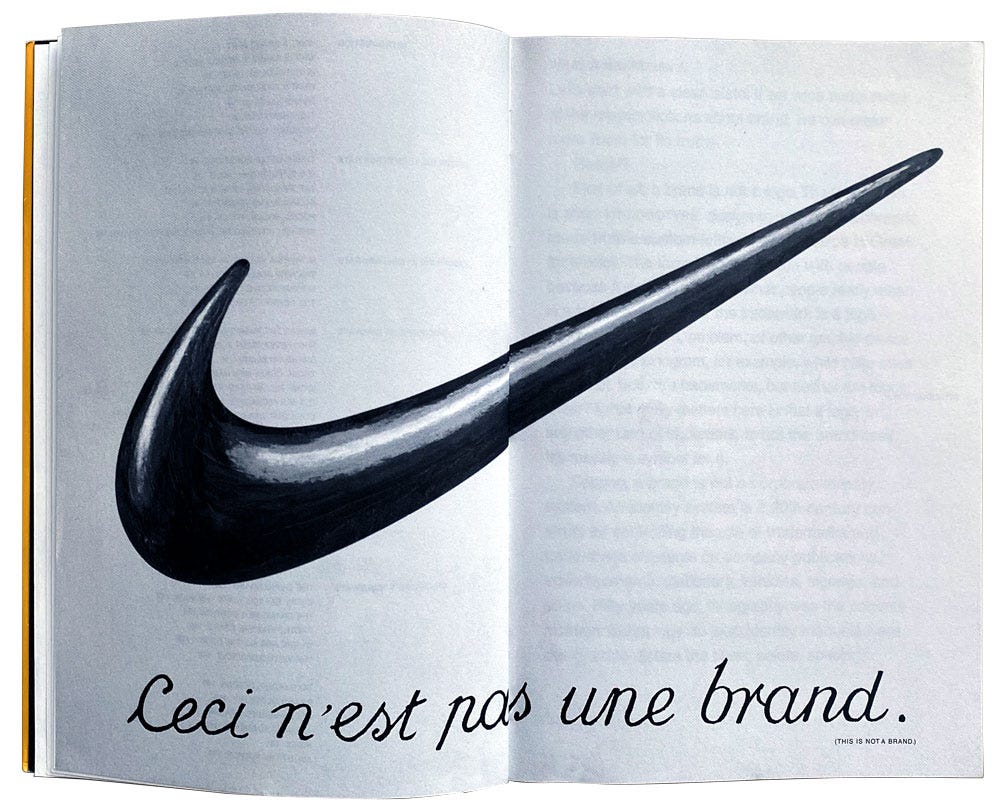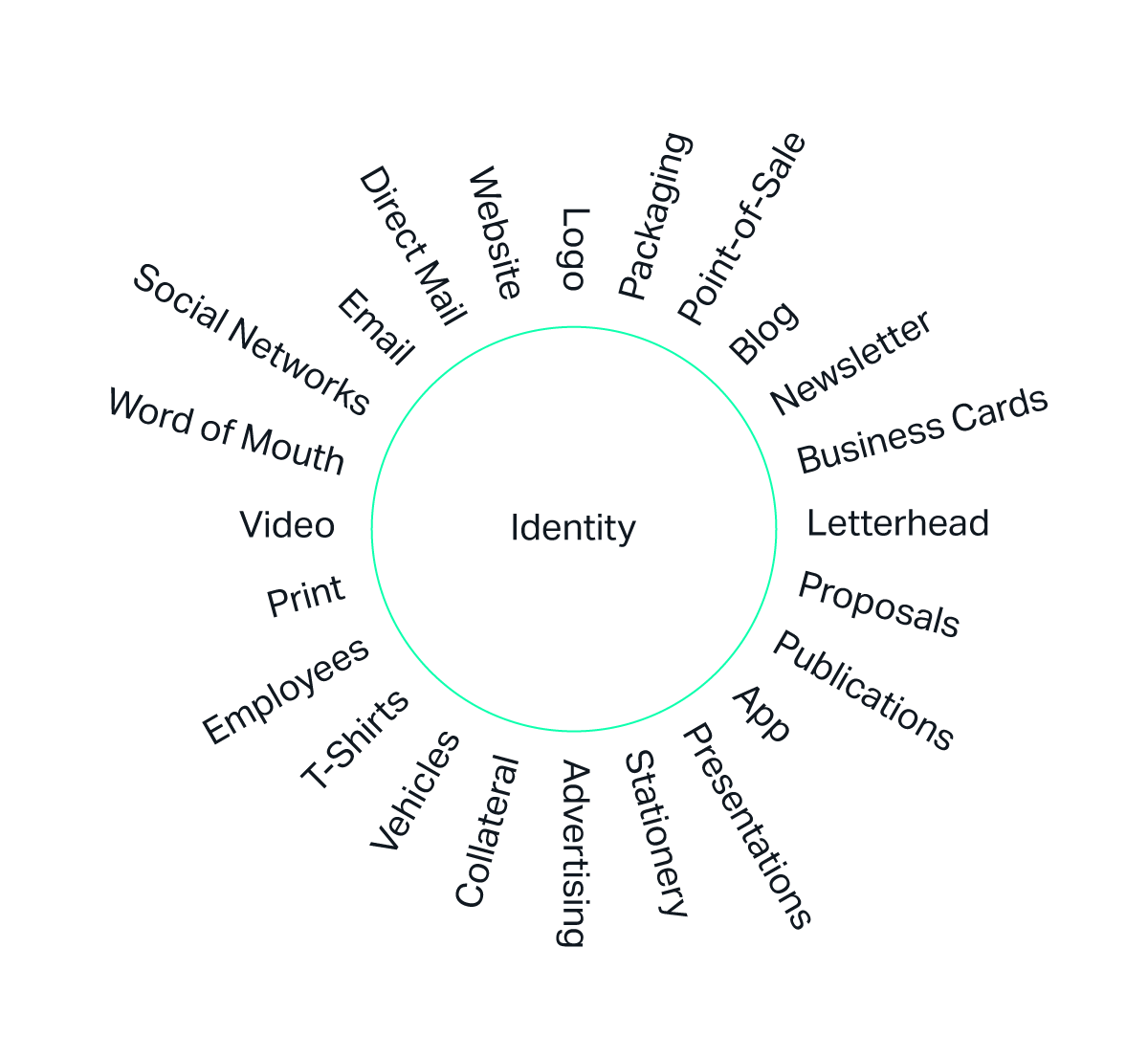If you took a guess, what brand comes to mind first from the image above? You probably guessed it. Coca Cola. Their brand is one of the largest, most iconic brands in the world and they can be easily recognized from just a simple letter. So let’s talk branding.
Your brand and your visual identity are both critical to your business but they are two different things and both terms have been used loosely in the past years in terms of what they stand for.
These are some of the most common ways project requests that come our way start with:
“We need to redesign our brand”
“We need to update our brand”
“We need to update our brand identity”
Most often, after a brief chat to understand the project at hand, typically they are referring to their logo or website. However, your logo and website is not your brand.
Defining “Brand”.
In the simplest form, your brand is the way someone feels about you. A deep down gut feeling. It is the emotional connection your customer has towards you. Every time your customer interacts with your brand, they build up a perception of how they feel and think about you as a business. If you think about your last experience with any brand that was negative, do you trust them as much anymore? Probably not. Over time, your customers will create a set of expectations on how each experience with you should be, and how they feel about you. Those thoughts and memories are what builds long term trust and loyalty. That’s what you want. That’s gold.

Your brand has three primary functions:
1. It Builds Trust
The more trust you build, the more loyal your customers become. You become irreplaceable in their eyes and there is an unbreakable connection between you and your customer. They will choose you over a competitor.
2. It Creates Distinction
You should stand apart from your competition, not blend in. The more distinctive you are from everyone else, the more noticeable you become.
3. It Increases Value
From a service, product, and a business you become more valuable. Additionally ー if your products or services are meant to be luxury, and you do not exude that feeling as a brand people will be hesitant to pay that higher price point. They will not see the value. Take Peloton for example; when they raised their bike prices they actually sold more bikes. Many people believed that because the bike was cheaper that it must not be a quality machine.
Peloton is also a great example of building a valuable brand over time. They empower people to connect, be inspired, and grow stronger together. They are the leader in their segment and while their products are expensive, they have built trust and differentiated themselves from others in a way people believe in and connect with, which has fueled their success. After only launching in 2012 they are now worth 4 billion dollars.
Defining “Brand Identity”
Your identity is all of the different touchpoints someone may interact with your business. It is an entire system put together that people can see, touch, hear and feel. This is everything from your logo to emails, customer services, and even the way you speak to people. This is how you influence the perception of your brand. Changing how people think about you, can change their behavior, which will increase your bottom line performance.

Your logo is only one piece of the puzzle, and while most often it’s the first step when creating your identity, it is not the last. A good logo surrounded by a frustrating website experience, un-unified collateral and marketing is a recipe for failure. Every touchpoint matters.
Your identity has three primary functions:
1. Identify Your Business
The visual look and feel that your company encompasses should separate you from the competition. Over time, your customers can immediately look at something and have a sense of feeling for that brand.
2. Communicate Your Message Clearly
It should communicate to the desired customer you are trying to attract. This is key. Your identity cannot always speak to everyone. Some brands target the average individual looking to stay fit, other brands target suburban moms who want to learn how to cook authentic asian cuisines. By understanding who is your ideal customer profile you can design for them, not for yourself.
3. Create Visual Consistency
Your identity takes separate elements, and makes them whole by staying consistent through design and messaging. Every part of your brand should be consistent. The moment something is different from the rest, you risk mis-communicating to your audience. This breaks trust.
The Branding Process
Branding is the ongoing process of developing, or re-developing your overall strategy and touchpoints within your identity. This could be redeveloping your website, logo, collateral, messaging and your color system. It’s an investment that can help position you for success and growth. There’s several key reasons when the process of branding is necessary.
New Company or Product
- You have started a new business, or have a new product
- You need to raise venture capital, even though you have no customers
Revitalization
- You need a facelift
- Your product or service is great, but you look behind the times
- Your packaging is not distinctive
Consistency
- Everyone creates and does their own marketing
- All of your marketing looks like it comes from different companies and you lack consistency
Reposition
- You are not attracting your desired customers
- You want to appeal to a new customers
- Nobody knows who you are
- You need to communicate more clearly who you are
Name Change
- Your name no longer fits the business you are in
- Your name needs change due to trademark conflicts
- Your name misleads customers
You have Merged
- Two companies have merged into one
- You need a new name
- You want to build on the equity of one brand
Starting the Branding Process
The branding process is essential for any business that wishes to differentiate and get ahead of their competition. It’s also a process you shouldn’t rush. While the investment is long term, it can pay off in growth of your business. The overall process consists of four systematic stages that vary from business to business.
Strategy
This gathers all necessary information from research to organized brand strategy workshops.
Design
The development of all visuals and assets
Implementation
The rollout of the new visual identity
Build
Adapt and pivot where necessary and grow your brand over time.
Why Branding is Worth The Investment
In the end, the long term rewards of the branding process building trust, distinction and value pay off big. It creates years of competitiveness for your business. However, in today’s business world everything moves at lightning speed. That makes it easy to get caught into quick fixes such as a fast logo or website redesign on websites such as Fiverr and UpWork which can be risky. The strategy and development process typically takes several weeks to a few months depending on the scale of the project at hand. Rushing this process will not provide the results you are looking for.
***
Free Branding Workbook
Want to try yourself? We’ve put together a free brand strategy workbook. While it’s not the same as professionally run workshops, it’s a great foundation for you to work from.


